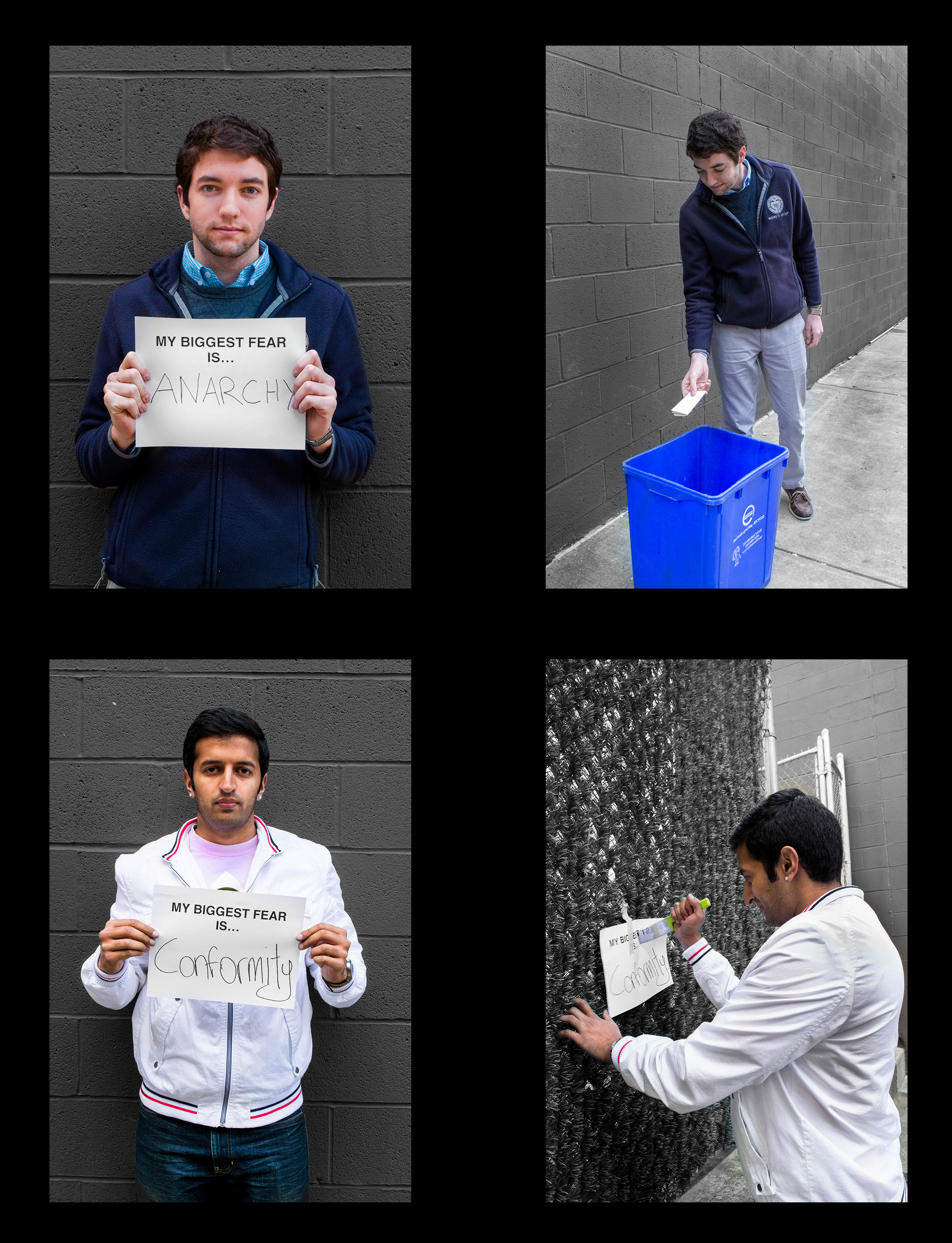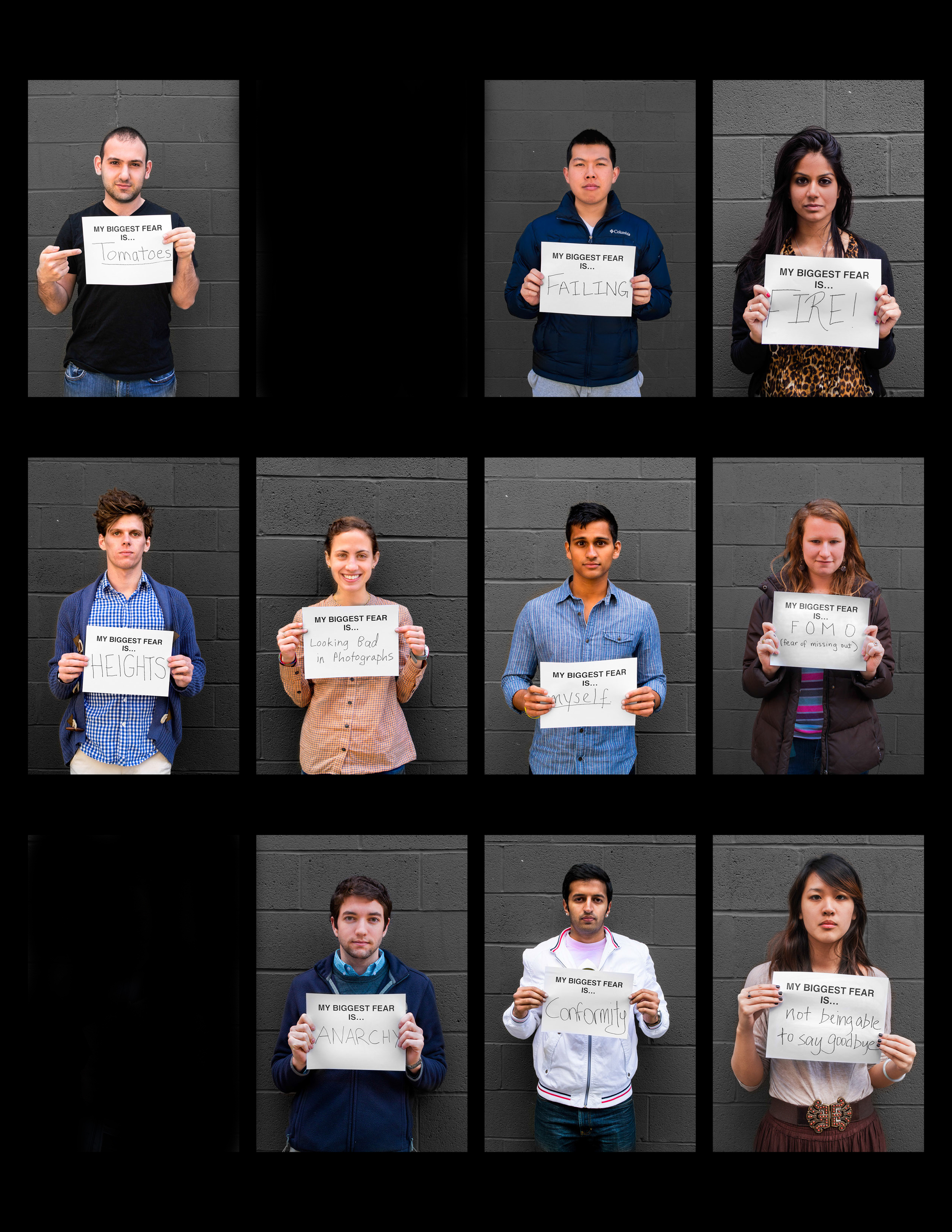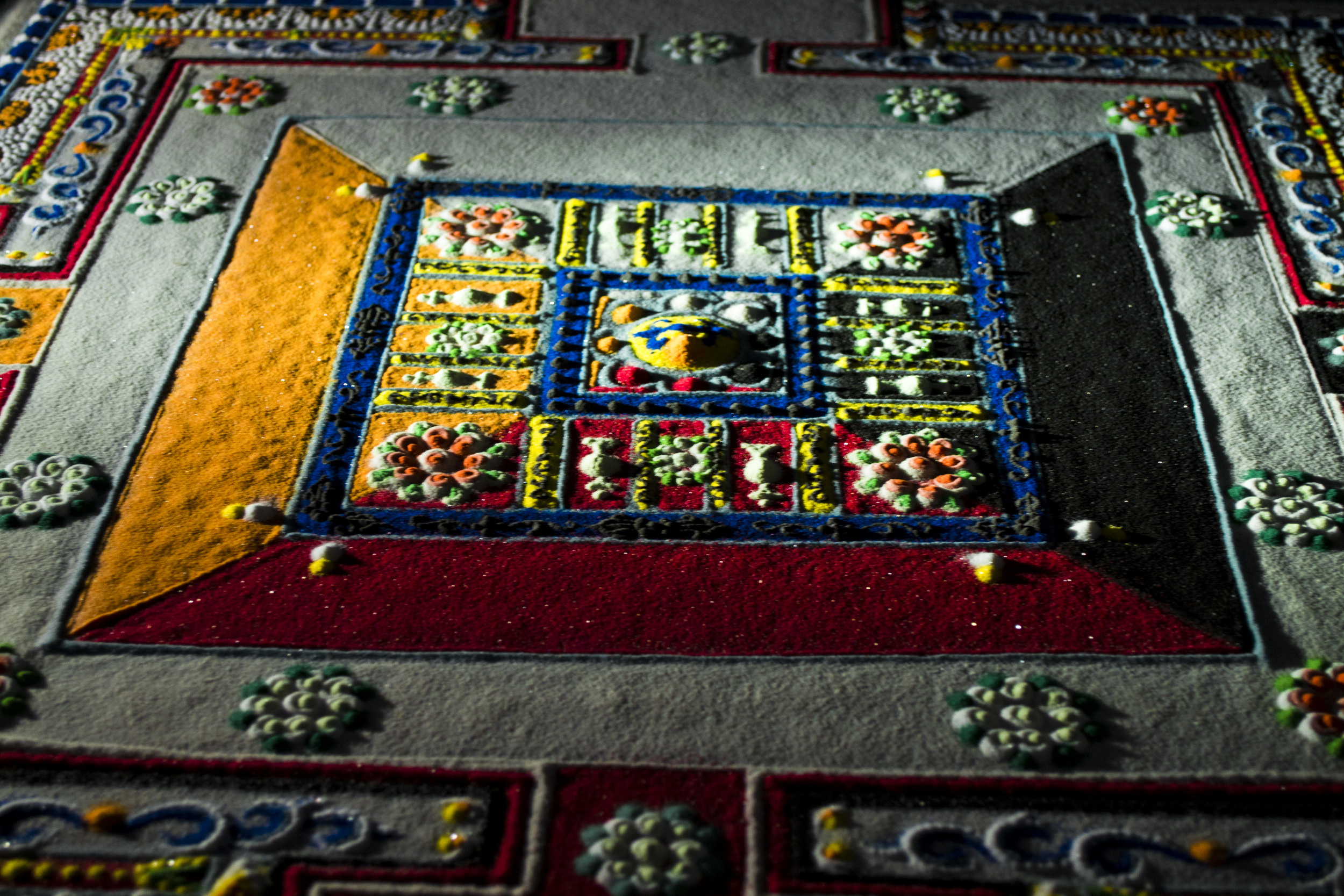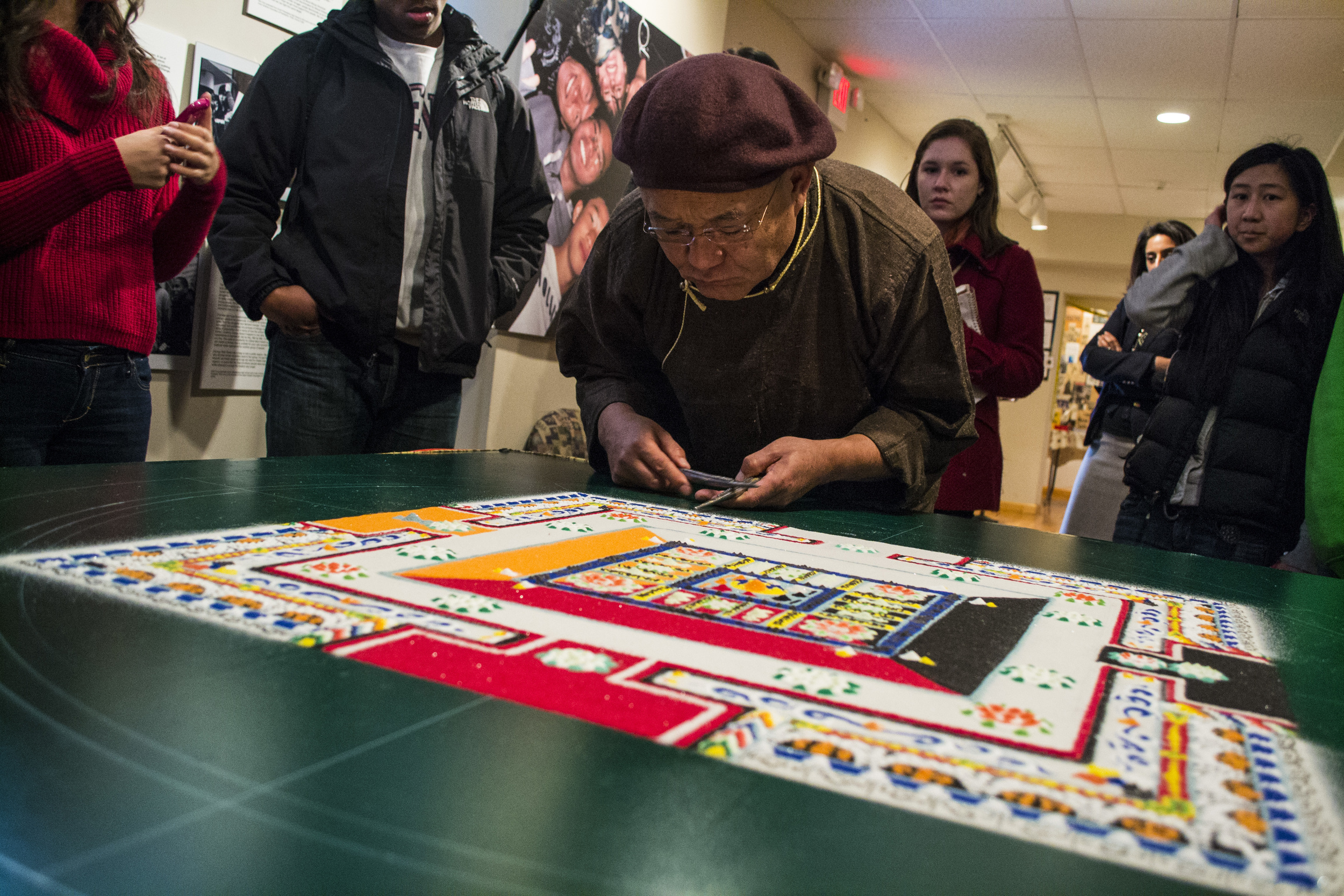He said he wanted to live a life worthy of a memoir.Isn't that what we all want? A life that's worthy and significant? Something that we can look back on when we're 80 years old and be proud of? But then I wondered: is it that we want to live lives that are worthy of memoirs? Or that we want to live lives worthy of someone else writing one? For me, it's the latter. I don't care who reads the story of my life. But to have one person want to spend enough time with me to hear the story of my life - to capture the moments that can't be excavated through my facebook, twitter, or blog - and then to turn them into a labor of love? Now that's true significance. I have big dreams and aspirations, that's for sure. But I don't think fame is one of them. We all claim that we want a voice, but for what reason? We say we want to be heard, but by whom? So why do I blog? Why do we tweet and why do we post? The flippant answer is probably attention. But I think it's deeper than that. There's still a feeling of catharsis when I post and know nobody will see it. There's still an urgency to get my thoughts down even if I know they are for myself. At least for me, I think I'm in some sense writing the outline of my own memoir - just a few pages here and there. So that maybe one day, someone will come along and I can show them the major pieces, but they can fill in the rest of my memoir themselves. We only share with the public what we wish. For some people like myself, that's more than others are willing to do. Very rarely are we able to convey something's full existence in one go. Instead we pick and choose and tailor down. Therefore, I don't think reading somebody's blog or following them on Twitter will enable you to truly know a person. Just like reading someone's memoir will only tell you so much. I suppose the only person who can truly know it all is the author of that memoir.
Response Piece /
One of our assignments was to visit a photography gallery and respond through our own piece. I chose to go to the White Petals Surround Your Yellow Heart exhibit at the Institute of Contemporary Art which is practically on Penn's campus. The entire exhibit illustrated various views on fashion, self-adornment, clothing, and texture. Some pieces such as Aura Rosenberg, John Miller, and Frank Lutz’s Carmen’s Fashion Do’s and Dont’s that featured a young girl and her brother in various fashionable clothing. While highly stylized, speech bubbles, colorful backgrounds, and humorous text complemented the images. For example, four images together were titled “Almost anything can make a great earring…almost!” with images of Carmen wearing buttons and bananas on her ears. Furthermore, Anne-Mie Van Kerckhoven’s pieces, Youth Code and NonPlus, incorporated photography with many other materials such as paint, different textured paper, magazines, pen, and more. Finally, the three photographs that stayed with me the most, were Wardell Milan’s Naomi and Landscape #1, 2, and 3. The three images contained a striking model in haute-couteure fashion with other prints and collages covering parts of her outfit or body. The prints were reminiscent of National Geographic pieces, ranging from flowers to deserts to the open sky. Though there was not an artist’s statement included with the pieces, I felt that the work was combining the two worlds of fashion photography: the models on the pages and the girls who read the magazines. The way that the shapes were cut out and pasted alluded to the way young girls crudely cut out their favorite images, pasting them in collages or on their walls. Because the additional work was done on the computer, it was almost unusual to see how flat the print was. The landscape images created new outfits, obscuring what Naomi was originally wearing.

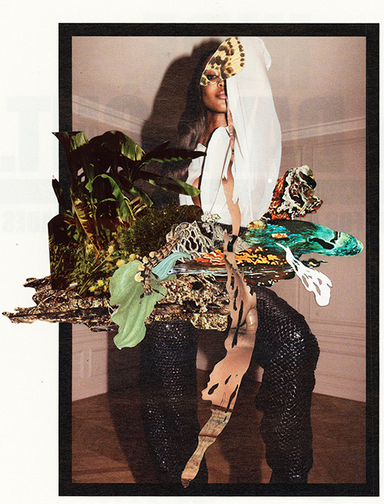
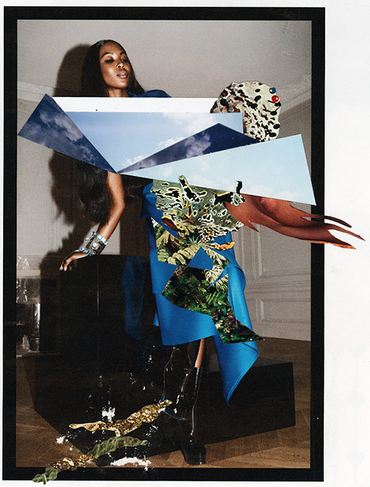 Ultimately, I was fascinated by the various ways that photography was combined with different elements. From speech bubbles to paint to computerized “collaging,” it really opened up my eyes to the various ways that photograph and other mediums can be combined with one another. I took multiple shots of nature: flowers, grass, branches, etc. I then cut some of them out similar to Wardell Milan's work, but also experimented with different layers and backgrounds.
Ultimately, I was fascinated by the various ways that photography was combined with different elements. From speech bubbles to paint to computerized “collaging,” it really opened up my eyes to the various ways that photograph and other mediums can be combined with one another. I took multiple shots of nature: flowers, grass, branches, etc. I then cut some of them out similar to Wardell Milan's work, but also experimented with different layers and backgrounds.
To be totally honest, I'm not sure how much I am a fan of this type of photography. I think I need to experiment a little bit more with collaging to see what style I like. I do like the layering effect, though. I think it would be quite beautiful to overlay a lace image over a portrait. As much as I love modern art, I'm realizing that when it comes to people, I lean towards what I consider beautiful and elegant. Perhaps I could try this style with inanimate objects and see if I would enjoy that more. Images from Wardell Milan and ICA
My Biggest Fear Is... /
For my next project, I chose to do it around the theme of "My Biggest Fear." I was partially inspired by Gillian Wearing who would approach strangers and ask them to write "confessional" things on pieces of paper and hold them up for a photograph. At the same time, at church we've done an exercise to write out my worries on a piece of paper and destroy it. It's cathartic in many ways and allows you to let go of your worries and give them to God. Based off of these two inspirations, I decided I wanted to take things a little closer than strangers and photograph close friends and their biggest fears. I asked a group of my friends to think about what their biggest fear was and how they wanted to destroy the piece of paper or representation of it.
The responses really ranged across the board. Tyler's tangible fear was the most tangible one: tomatoes. And of course, we felt the most appropriate way to destroy it was to smash it to oblivion! It was beyond awesome. Note: You can click on the images to make them larger.
Other fears were much more abstract such as Janet's fear of "not being able to say goodbye." Rather than to destroy her fear, she chose to be photographed walking away from it and leaving it behind.
Ankit's fear was himself. We struggled for a while to brainstorm with how exactly he would overcome that fear because destruction (of himself) would actually be giving into his fear if anything. Finally, he settled on the idea of blacking out the rest of the paper except for the words "myself."
What was also really interesting was finding "pairings" in fears. Matt's fear was of anarchy which actually did fit him perfectly if you know him. He chose to "destroy" it by folding it up neatly and recycling it. On the other hand, Sumeet's fear was of conformity and he chose to stab it with a knife. A technical difficulty was collaging images together - still working on that!
I also decided to make full collages of all the fears and all the destructions as well. I've also been learning some more techniques in Photoshop like how to make the background black & white so only the person is in color. I chose to use this technique to symbolize the individuality of each person. At the same time, however, while all of my friends are individuals, when collaged together like below, they represent the grander scheme of things: fears that we all share as a collective society.
Note: Blacked out images are due to privacy requests. Huge apologies to my wonderful friend Krystal who also took part in the shoot. I somehow forgot to take the photo of her holding her fear straight on.
Losang Samten's Mandala /
I'm pretty sure that all of my posts on this blog are completely out of order chronologically, but oh well! A few weeks ago I had the opportunity to visit the Philadelphia Folklore Project with a class to see Tibetan artist & monk, Losang Samten, create a mandala. A mandala is a form of sand painting where every color and design is intentional and represents something to the artist.
In the following two images, they placed a bright light at the left side to show the depth of the sand:
As you can see in the pictures below, Losang holds two metal "sticks" - one filled with sand, and one to create vibrations on the other. He carefully distributes the different colors with these tools. We gave it a try, and it's incredibly difficult. It takes Losang about a week to create this size of a mandala, and at the end of the week he destroys and demantles it to symbolize the fleeting aspects of life.
While Losang is creating the mandala, he's constantly praying with God. He said that not everybody has the stillness of mind to just sit and meditate, so this is a beautiful way of being in communication with God through action. Even though the two of us come from different religions, that sentiment was something I appreciated a lot - I don't think I have ever successfully gotten through a prayer in my mind without thinking about something unrelated or falling asleep. Instead, I have to journal as a means of collecting all of my thoughts into coherent sentences, and that's how I pray.






